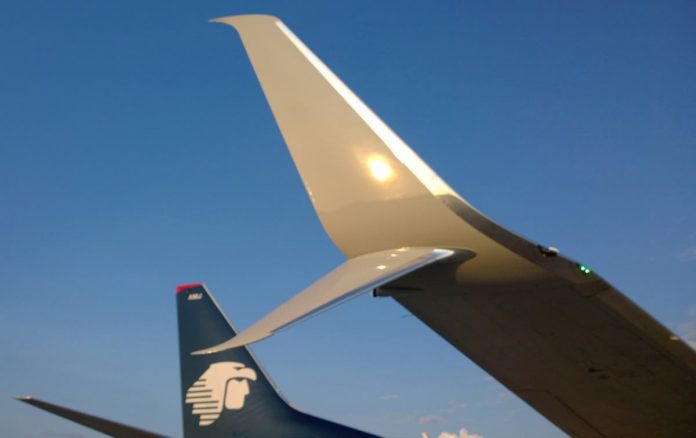If you have ever looked at an aircraft, you might have noticed a variety of ‘crazy’ designs on the end of aircraft wings. These are called Winglets on Boeing aircraft and Sharklets on Airbus aircraft, and both provide a significant role in reducing drag. How do they work, and what is the difference? Let’s explore.

The problem with wingtips
Before we dive into the difference between Winglets and Sharklets, we need to understand why either exists.
When an aircraft flies, its wing creates a difference in air pressure. The air above the wing is lower than air under the wing, generating lift (and the whole system of flight). However, as the wing trails off into a tip (wingtip), the two pressure zones meet, and the confluence creates a series of spiraling vortexes.
The larger the vortexes, the more drag is created, slowing the aircraft down. As the plane slows down, the engines need to burn more fuel to maintain speed, costing the airline more money to operate.
Thus airlines and aircraft manufacturers are motivated to modify wingtips in such a way to reduce the size of generated vortexes. Blending a curve into the wingtip has shown to impact the size of the vortex significantly, narrowing the air turbulence diameter significantly.
The creation of winglets
In 1973, the middle-eastern oil crisis hit the aviation industry. Aircraft fuel became a premium commodity, and airlines suddenly found themselves measuring every drop. They accurately predicted that fuel would become more expensive and that they needed in kind to operate more fuel-efficient aircraft.
In partnership with NASA, aircraft manufacturers like Boeing started to experiment with ways to reduce drag and make fuel last longer. They notice that when it came to nature, birds of prey had feathered wingtips that curved up and back at the end of their wings. This generated more lift and reduced drag.

In 1988, Boeing was the first to offer Winglets with its Boeing 747-400 (called the angled winglet), but it wasn’t until Gulfstream implemented a ‘blended winglet’ design that the technology took off. Boeing would partner with blended winglet creators Aviation Partners and implement the new design in its 737, 757, 767 programs and offer them retroactively to existing customers.
What about Airbus’ Sharklets?
In 2002, the European Union started a program called the Aircraft Wing with Advanced Technology Operation (AWIATOR). This program would look at ways to reduce drag and the fuel burn of aircraft, as well as examining noise and aircraft wakes. Airbus had been experimenting with winglets since 2000, but by 2006 wasn’t yet convinced in the technology.
“[The] latest information on the A320 winglet testing is that the results indicate that although improvements were found in terms of cruise drag, the increase in structural weight that would be necessary to support the winglets largely offsets the gain”. – Airbus in 2006
In 2011, Airbus finally began to offer its version of winglets, called Sharklets. Aviation Partners would sue Airbus, claiming that they used experiments with the original blended winglet design to come up with its model. In the end, Airbus lost the lawsuit and paid out an undisclosed sum to Aviation Partners.
What is the difference between the two?
There is no real difference between the two types of winglets apart from cosmetics. They are so close in design (that Airbus was proven to be infringing on a patent) that no version is better than another.
However, winglets and sharklets are both solutions to inefficient wing design from earlier aircraft. A well-designed wing resolves the pressure difference as the wing ends and thus doesn’t need anything on the end of the wings.
What do you think? Let us know in the comments.
[ad_2]
Source link
